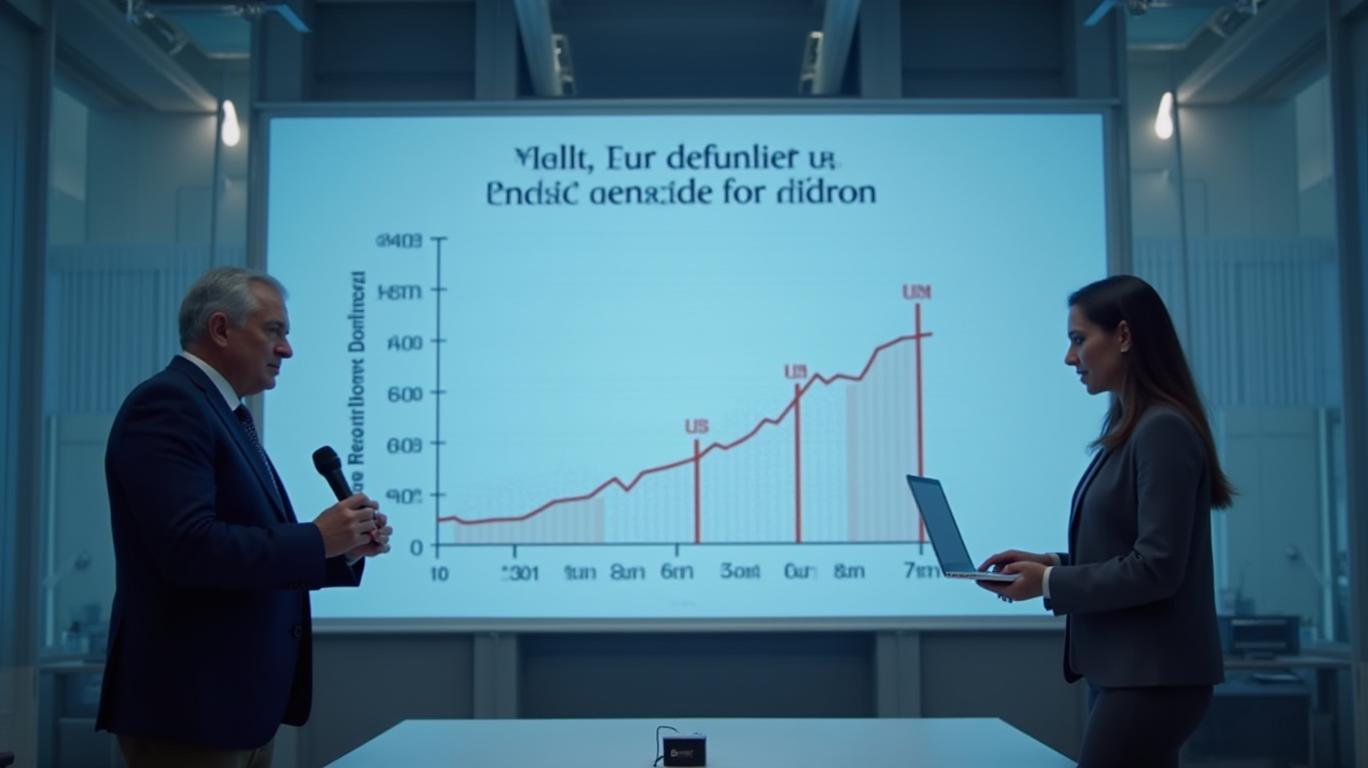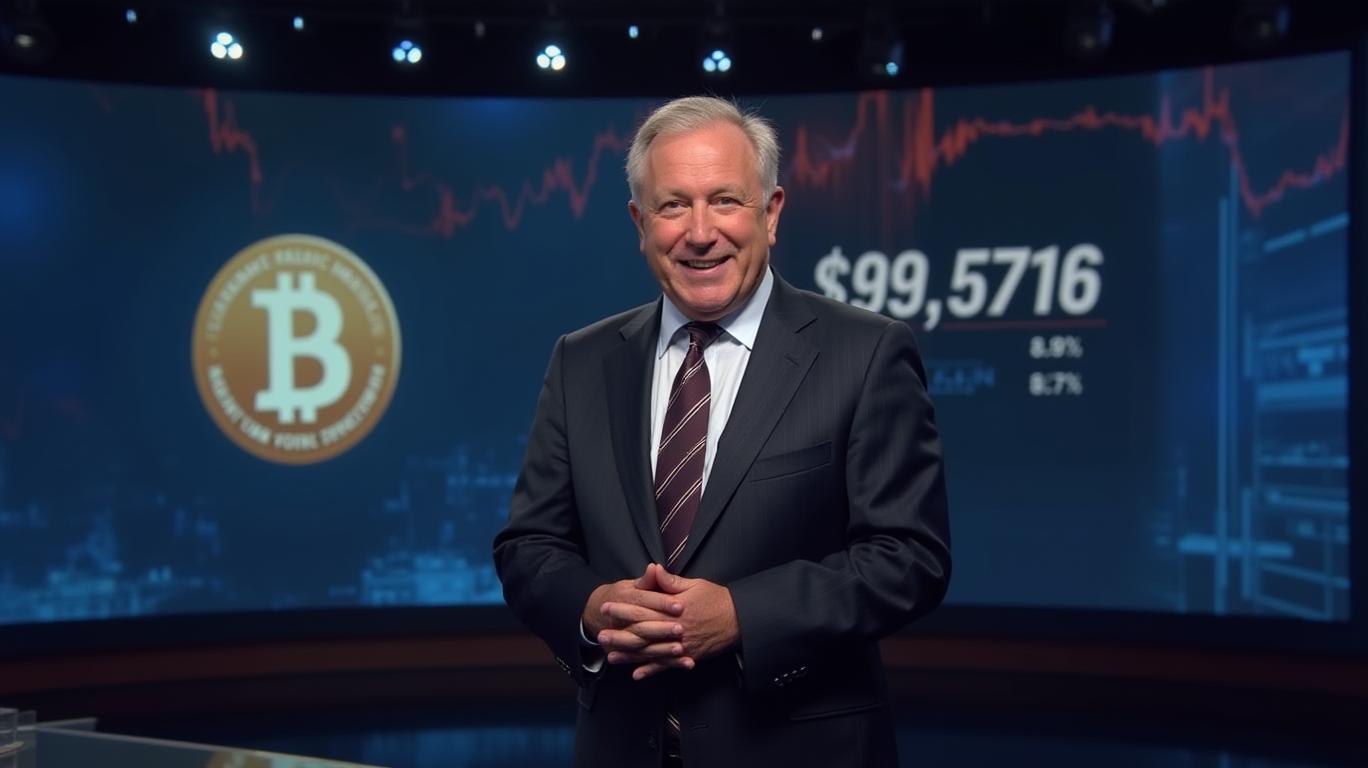Fed Holds Rates, Bitcoin Drops 0.9% to $96,156
The Federal Reserve maintained its lending rate between 4.25 and 4.5 percent on Wednesday, May 7. The Fed downplayed the immense pressure from the U.S. President to lower its benchmark interest rates, as the committee continues to judge the risks of higher unemployment and inflation caused by the ongoing trade wars. The Fed will continue to reduce its holdings of Treasury securities, thus highlighting its bid on Quantitative Tightening (QT). However, the Fed noted that it will act appropriately in case of risk emergence to ensure maximum employment and reduce inflation to 2 percent.
Ask Aime: What's your strategy for investing in the current market?
Following the announcement, the wider crypto market recorded mild losses. After Bitcoin price teasing above $97k earlier on Wednesday, the flagship coin retraced slightly to trade about $96,156 during the mid-North American trading session. From a technical analysis perspective, Bitcoin price faces a short term bearish sentiment, especially after being rejected twice at the resistance level about $97.6k since the beginning of May. In the four-hour timeframe, Bitcoin price has been consolidating between $93,685 and $97k. If the flagship coin breaches the established support level around $93.6k, a drop towards $91k will be inevitable in the near future. However, a consistent close above $97k in the coming days will set the tone for a rally towards the all-time high above $100k.
Ask Aime: "Should I buy Bitcoin now, or wait for a dip?"
To understand the Bitcoin whale activity, it is prudent to study the U.S. spot BTC ETF market. In the past three weeks, the U.S. spot BTC ETFs have recorded a positive but declining cash flow. Nevertheless, Bitcoin maximalist investors – led by BlackRock’s IBIT, Strategy, and Metaplanet, among others – have continued to accumulate more BTC coins regardless of the underlying price volatility. Moreover, Bitcoin price is expected to follow golf price action in the long haul, catalyzed by rising global money supply and high demand from institutional investors.
The Federal Reserve, in its recent meeting, decided to maintain the key interest rate unchanged, adhering to a cautious "wait and see" approach. This decision comes amidst a backdrop of economic turbulence, with the U.S. economy experiencing a contraction in the first quarter of 2025, a reversal from the growth seen in late 2024. Consumer spending has notably slowed, while inflation remains elevated, with the core PCE price index climbing to 3.5% annually. Additionally, recently enacted trade tariffs are expected to exert upward pressure on prices, further complicating the economic landscape.
The Fed's decision to keep the rate unchanged was widely anticipated, with futures pricing indicating a probability exceeding 97% for this outcome. However, the focus has now shifted to the tone and nuance of Chair Jerome Powell’s subsequent press conference, which could significantly impact risk assets, including Bitcoin. The market is closely watching for any dovish or hawkish signals from Powell, as these could influence Bitcoin's price trajectory. Bitcoin, which has become increasingly tied to macroeconomic narratives due to surging institutional adoption, has shown heightened sensitivity to Fed policy decisions. Rate holds have sometimes prompted selloffs, while cuts have often fueled rallies. For instance, December 2024’s quarter-point reduction coincided with Bitcoin’s climb toward $108,000. Conversely, March 2025’s rate hold was followed by choppy price action, reflecting the market's sensitivity to Powell’s guidance.
The current economic indicators present a complex picture for the Fed. Real GDP growth contracted by 0.3% in the first quarter of 2025, signaling economic weakening and pressuring the Fed towards a more accommodative stance. However, the acceleration in PCE inflation to 3.6% annually and core PCE inflation to 3.5% reinforces concerns about underlying price pressures, pushing the Fed to maintain a restrictive stance. The unemployment rate, while slightly upticked to 4.2%, remains relatively low, giving the Fed some room but requiring vigilance for further deterioration. Consumer spending growth has sharply slowed to 1.8%, indicating weakening demand and raising concerns for future growth.
This combination of factors has raised the specter of stagflation, leaving the Fed in a precarious position with limited policy flexibility. Bitcoin’s role and impact in macroeconomics have become more pronounced, with its price movements closely tied to Fed policy decisions. If Powell strikes a dovish tone, emphasizing downside risks to growth or hinting at rate cuts later this year, Bitcoin could see renewed upward momentum. Conversely, hawkish signals suggesting persistent inflation concerns or skepticism towards easing could pressure prices, with key support levels between $92,000 and $94,000 in focus.
Liquidity conditions surrounding the event may exacerbate volatility. As seen in prior FOMC cycles, options market positioning and thinner liquidity can amplify intraday moves. Traders are watching closely for a potential “sell the news” reaction should Powell’s remarks fail to meet dovish expectations already priced in. beyond short-term moves, Bitcoin’s evolving correlation with macroeconomic indicators highlights its maturing market structure. The approval and adoption of spot ETFs have drawn institutional investors who calibrate portfolios based on interest rate trajectories and broader financial conditions. This shift has aligned Bitcoin more closely with traditional asset responses to monetary policy, though its unique characteristics remain a defining factor.
Analyst projections reflect the range of possible scenarios. A hold combined with dovish guidance could push Bitcoin’s price up, with support levels around $94,000 and resistance levels around $100,000. Conversely, a hold with hawkish guidance could pressure prices down, with support levels around $92,000 to $94,000 and potential drops to the high $80,000s. Neutral or ambiguous guidance could result in choppy or range-bound price action, with continued consolidation and volatility. Institutional flows increasingly dictate Bitcoin’s price action, with FOMC meetings now serving as key catalysts. Thus, today’s decision and Powell’s commentary are poised to resonate well beyond traditional finance, potentially shaping Bitcoin’s trajectory through mid-2025.



_cbf77e8c1748017079428.jpeg)






